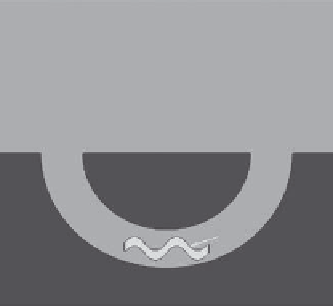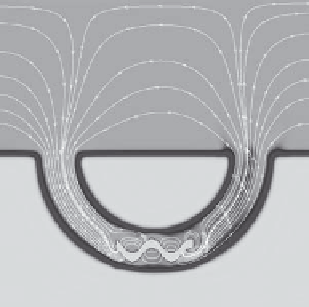Biomedical Engineering Reference
In-Depth Information
(a)
(b)
I
- Navier-Stokes equation
- Concentration equation
II
III
II
- Extended Navier-Stokes equation (Darcy + Brinkman)
- Concentration equation
FIGURE 10.19
Geometry of the burrow and the overlying water column with the larva motion
simulated (a) and the streamlines and the concentration distribution (gray
scale) due to the larva's pumping (b).
as well as the concentration equation, the velocity and concentration field
(Figure 10.19) (b) could be obtained precisely. The comparison of the outlet
or inlet velocity field obtained in the simulation with the same from the PIV
measurements resulted in a good agreement (Morad et al. 2010b).
10.4 Future Prospectives
Porous media applications are ubiquitous not only in technical but also in
marine and biological studies, from which some current examples were given
in this chapter. However, the real challenge is still to come, namely, in com-
bining visualization and modeling in micro- and nano-scale biology, which,
to a larger extent, depends on the progress in multiscale transport processes
in complex porous media. Progress in porous media can help characterizing
microbial communities to a small scale. Systems approaches require precise
analyzes of the spatio-temporal properties of multiple existing microbial envi-
ronments available in diverse microbiological applications. Exactly, this can
be done by the lattice Boltzmann models that are capable of accounting for
both the complex structures and the microbial growth and activity on changes
to surface wetting induced by surfactants (O'Donnell et al. 2007).
10.5 References
Alldredge, A. L. (1999). The potential role of particulate diatom exudates
in forming nuisance mucilaginous scums.
Annali Dell Istituto Superiore di
Sanita
,
35
(3):397-400.






Search WWH ::

Custom Search